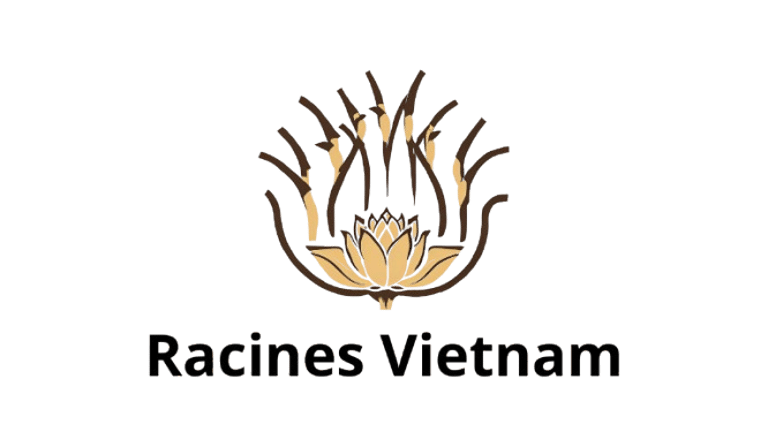“A blog created by an adopted Franco-Vietnamese for all those seeking to reconnect with their origins.”
Family Tree for Adoptees: Reconnect with Your Roots (2025 Guide)
Discover how adoptees can build a family tree with minimal info using DNA kits, genealogy tools, and smart strategies. Reconnect in 2025.
5/11/20253 min read
How to Build a Family Tree with Limited Information: A Guide for Adoptees
Introduction
Tracing your family tree can be a deeply personal journey—especially when you're adopted and have limited information about your origins. While traditional genealogy relies on documents and known relatives, adoptees often face blank pages and closed archives. But thanks to modern tools like ancestry DNA testing, genetic databases, and collaborative genealogy platforms, it’s never been more possible to uncover your lineage. This guide will walk you through a practical, step-by-step method tailored specifically for adoptees seeking to build their family tree from scratch.
Step 1: Start with What You Know
Begin by gathering any available data, no matter how limited:
Adoption papers or legal documents
First names or locations mentioned by adoptive parents
Cultural or ethnic hints (spoken language, traditions, etc.)
Medical history if available from agencies
Even a single city or surname can become a crucial clue.
Step 2: Use DNA Testing Services
Genetic genealogy has revolutionized the search for origins. Order a DNA test kit from leading services like:
AncestryDNA
23andMe
MyHeritage
FamilyTreeDNA (FTDNA)
With a simple cheek swab or saliva DNA sample, these services analyze your genome and match you with possible common ancestors, genetic relatives, and cousins.
Key concepts to understand:
Alleles, mutations, and genetic markers
Single nucleotide polymorphisms (SNPs) and polymorphisms
Paternal line (Y chromosome), maternal line (mitochondrial DNA), and X chromosome
Autosomal testing, haplogroups, haplotypes, and admixture analysis
Understanding DNA test results, nucleotides, DNA sequence, and the genetic code
How to interpret genetic tests, paternity-tests, and inheritance patterns
The role of forensic DNA, genotyping, and laboratories in identity research
Step 3: Explore Genetic Databases
Once your DNA is sequenced, upload your raw data to open-source DNA databases like:
GEDmatch
FTDNA
Wikitree
These platforms enhance your chances of finding matches by comparing genetic information across users and uncovering genetic ancestry links. You can also explore the Genographic Project to better understand your ancestral descent.
These tools help adoptees discover connections to:
Distant relatives and distant cousins
European ancestry, African ancestry, Native American ancestry, Jewish ancestry, or Ashkenazi roots
Potential parentage, inheritance, and even Neanderthal traces
Discoveries about your biological father, grandmother, paternal grandfather, or other family members
Connections based on ethnicity, genomic regions, and population-genetics insights
Step 4: Build a Digital Tree
Use a genealogy platform to organize your family history and manage evolving data:
Geni
FamilySearch
Wikitree
These tools help visualize relationships between ancestors, descendants, grandparents, great-grandparents, and shared surnames. Features like Family Finder and DNA matching help track genealogical research and connect with relatives.
Some services allow users to trace pedigrees, view MyHeritage Family Trees, and track genetic heritage across generations. The ability to manage uploaded DNA results adds flexibility to your research.
Step 5: Work with Genealogists or Search Angels
Professional genealogists and volunteer search angels can interpret your genetic-testing outcomes and guide your genealogy research. Experts in genomics, forensic genealogy, or certified geneticists can clarify your DNA analysis and decode complex family connections.
They can assist with:
Clarifying chromosome mapping, triangulation, and haplotype groupings
Decoding Y-DNA, mtDNA, and X chromosome overlaps
Identifying leads through test kits, testing companies, direct-to-consumer testing, and testing services
Step 6: Reach Out with Sensitivity
If your journey reveals biological grandparents, siblings, grandmother, or other close relatives, take care in making contact. Approach with sensitivity and an open heart, as not all stories lead to instant acceptance.
A respectful example:
Hello, I recently took a DNA test and found that we might be related. I'm exploring my roots and would appreciate the opportunity to connect if you're open to it.
Step 7: Keep a Research Journal
Track every step in your discovery process—from initial swabs and test kits to final DNA test results. Keep organized notes on possible descendants, conversations, family anecdotes, and documents found during your search. Document your discoveries, DNA sequences, and all steps of your researching journey.
Conclusion
Building a family tree from minimal information is a powerful and emotional endeavor. But thanks to modern advances in genetics, DNA ancestry, and family history research, adoptees have more access than ever to their personal history. Whether through genetic analysis, paternity testing, or collaborative genealogical tools, your identity is not lost—it’s waiting to be rediscovered. You may be descended from people you never imagined, and your journey may take you from the Isles to distant lands—perhaps even Scandinavian regions.
FAQ
Can adoptees find their biological parents with DNA testing?
Yes. Many adoptees have located biological parents or close relatives through autosomal DNA tests and public databases.
What’s the best DNA kit for adoptees?
AncestryDNA, 23andMe, and FamilyTreeDNA are top choices due to their robust genetic databases and analytic tools.
How accurate are DNA matches in building a family tree?
They’re generally reliable, especially for close relatives. Always confirm with documentation and genealogical analysis when possible.
Can I build a family tree without knowing my birth parents?
Yes. With tools like Family Tree DNA, raw data uploads, and professional genealogists, adoptees can trace genetic ancestry back multiple generations.
Is it safe to share DNA data online?
Most platforms offer adjustable privacy settings. Understand the risks and read the terms of use before sharing your genetic information.
Main Menu:
Explorations:
Resources & Immersive Content
Community & Support
Legal & Languages
Contact & Social Networks
✉️ contact@racinesvietnam.com
📱 Instagram | Facebook | YouTube
©️ Copyright
© 2025 RacinesVietnam.com — Tous droits réservés
Site indépendant, créé sans code, hébergé par Hostinger
